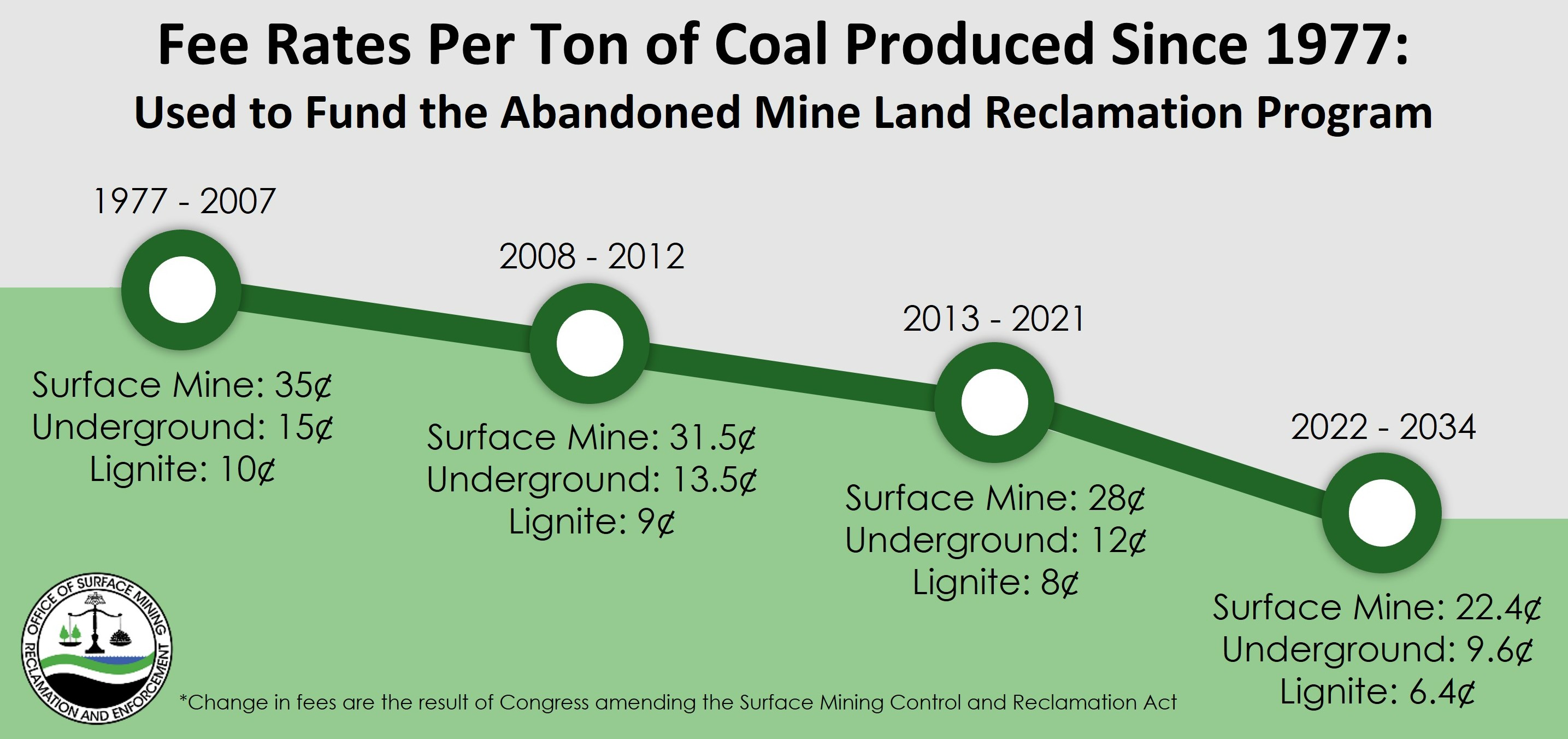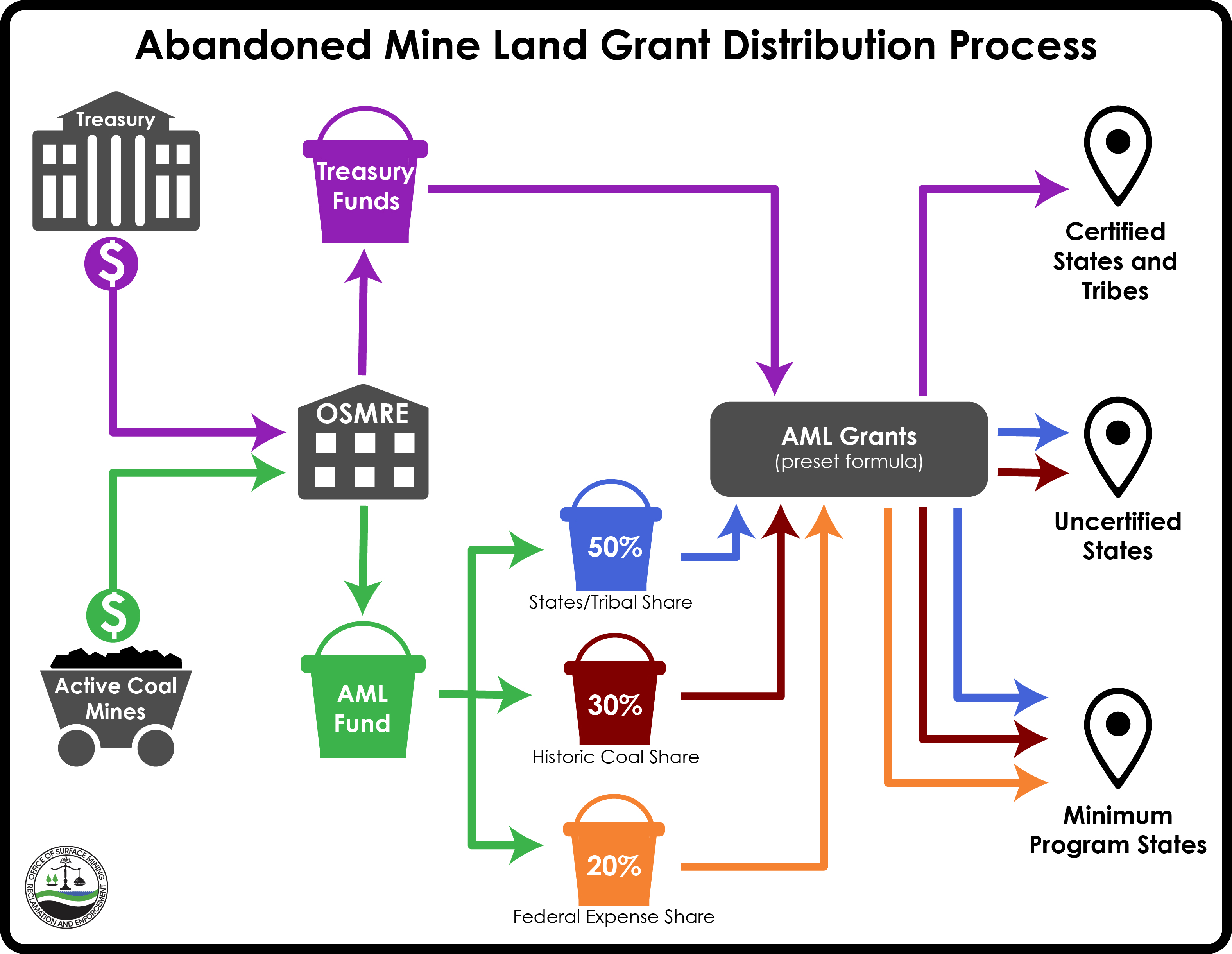Reclaiming Abandoned Mine Lands
Title IV of the Surface Mining Control and Reclamation Act
Restoring the Environment
Coal mining has been common in the United States for nearly two centuries. Prior to the passage of the Surface Mining Control and Reclamation Act (SMCRA) of 1977, there was no regulatory oversight of coal operators or what happened to mines after mining stopped. As a result, millions of Americans live less than a mile from an abandoned coal mine.
Abandoned Mine Land Program
The OSMRE Abandoned Mine Land (AML) Reclamation Program addresses the hazards and environmental degradation posed by legacy coal mines. While AMLs can be dangerous and unwelcoming, through reclamation, this land can find a new purpose.

Title IV of SMCRA created the AML Reclamation Program which has been funded by a fee assessed on each ton of coal produced since August 3, 1977. As originally enacted, SMCRA authorized collection of the fee for 15 years. To sustain the program, Congress has amended SMCRA to change the structure of the fee three times and reauthorize fee collection eight times since its inception. Most recently, this was done in 2021 under the authority of Public Law No. 117-58 which adjusted the fee structure and extended OSMRE's fee collection authority through September 30, 2034.
AML Fee-based Reclamation Fund Status does not include the FY 2025 Grant Distribution. Information is as of September 30, 2024.

As of September 30, 2024, the Abandoned Mine Land Reclamation Fund (AML Fund) has collected $13.561 billion, including interest earned, through a reclamation fee assessed on each ton of coal that is produced.
OSMRE has distributed $6.480 billion in AML grants to states and tribes from the collected fees. An additional $2.302 billion was transferred to United Mine Workers of America (UMWA) Health and Retirement Funds, and $1.993 billion has been used for OSMRE operating expenses and AML emergencies, and $2.786 billion of the AML Fund remains unappropriated.
For more information, see the most recent Status of the AML Fund report.
Each year, OSMRE calculates the specific proportion of AML fee-based grant funding to be awarded to each state and tribe. The 2006 SMCRA Amendments mandated this AML grant distribution process.
The distribution is determined using a pre-set formula authorized by SMCRA.
This formula takes into account AML fee collections, historic coal production, the various shares within the AML Fund (i.e. State/Tribal Share, Federal Expense Share, Historic Coal Share), the minimum program supplemental adjustments, the AML inventory and, any other special Appropriations Act provisions (e.g. sequestration).
Reclamation in Action
Each year, OSMRE honors the most exemplary AML reclamation projects. Learn about the previous AML Reclamation Award recipients.
Interested in learning more about mine reclamation? Learn more about Reclamation in Action.
Resources
The Abandoned Mine Land Inventory System (e-AMLIS) is a computer system used to store, manage, and report on OSMRE's Inventory of Abandoned Mine Land Problems. This includes both problems in need of reclamation and those that have been reclaimed.
Questions regarding e-AMLIS should be sent via email to [email protected]
OSMRE establishes policies and procedures for evaluation of State and tribal abandoned mine land reclamation programs. To learn more, visit the OSMRE Oversight webpage.


